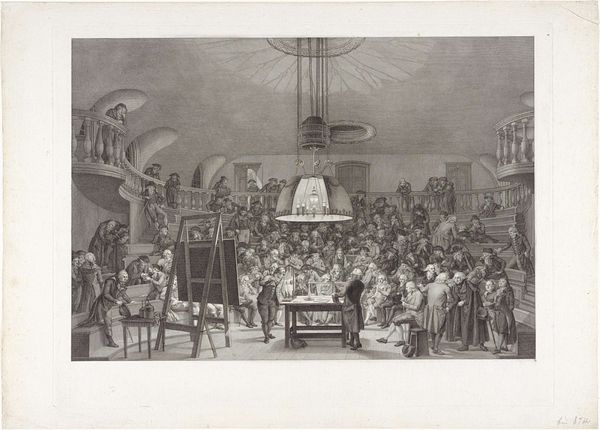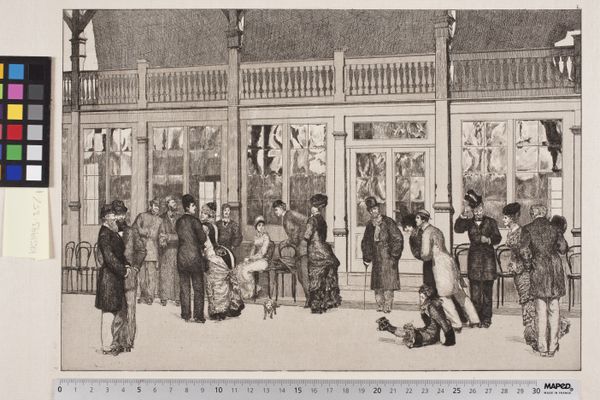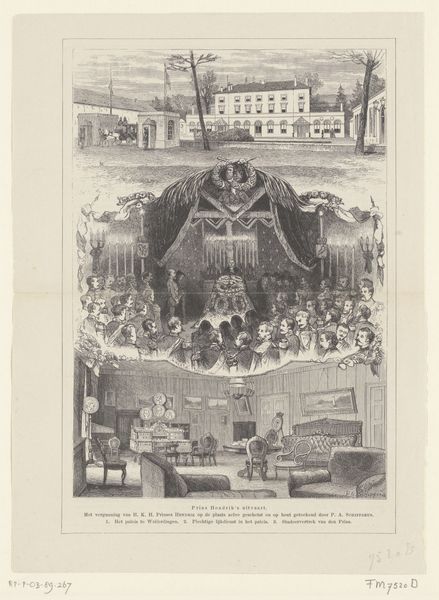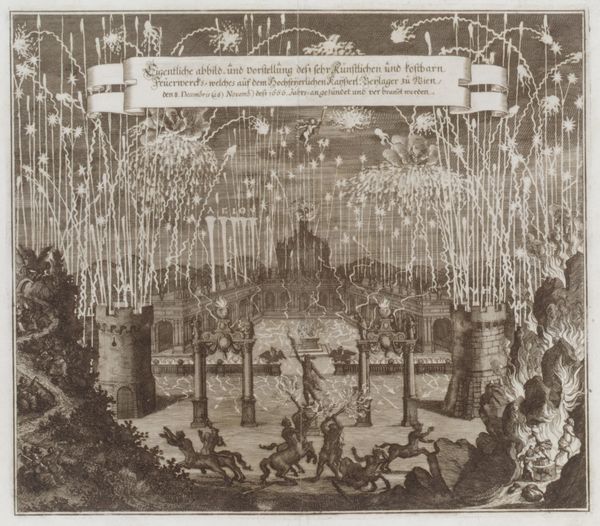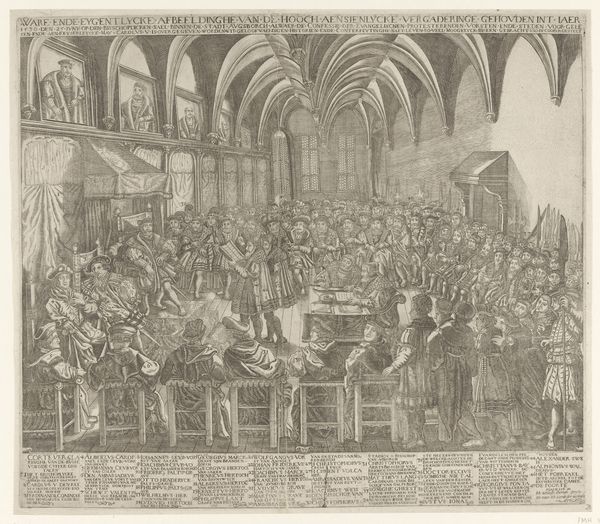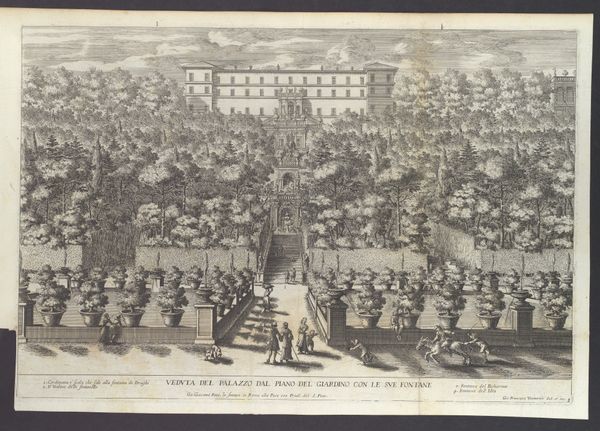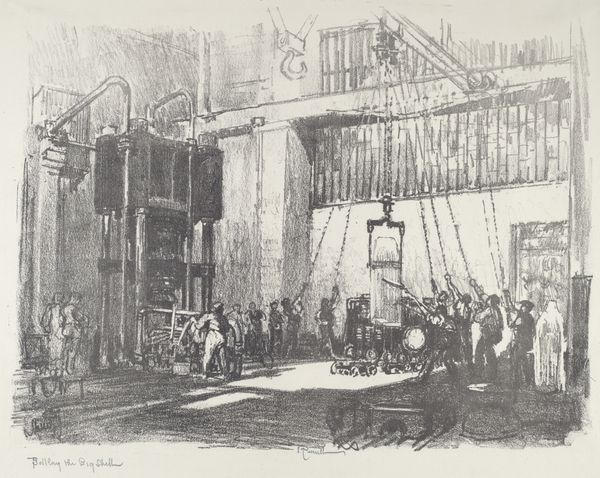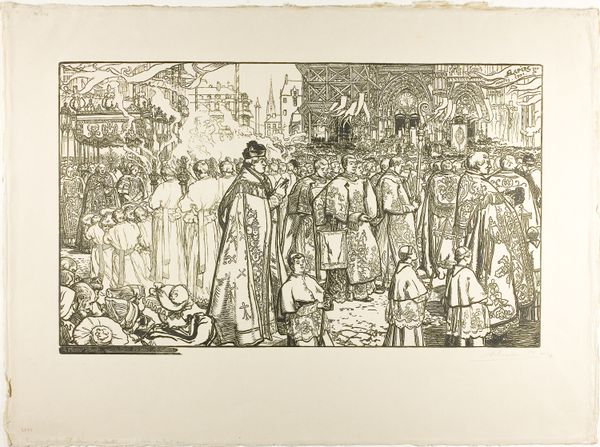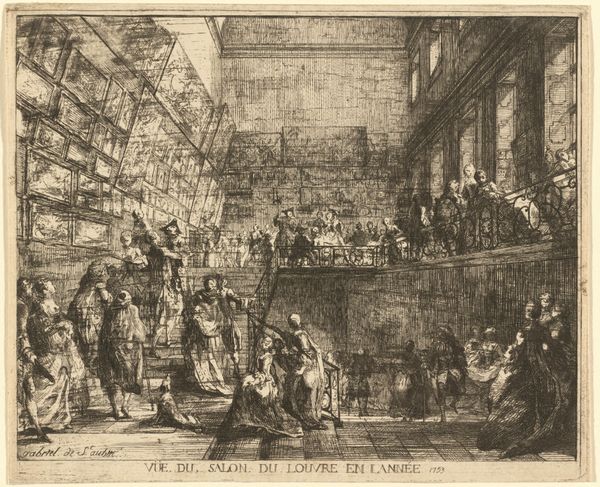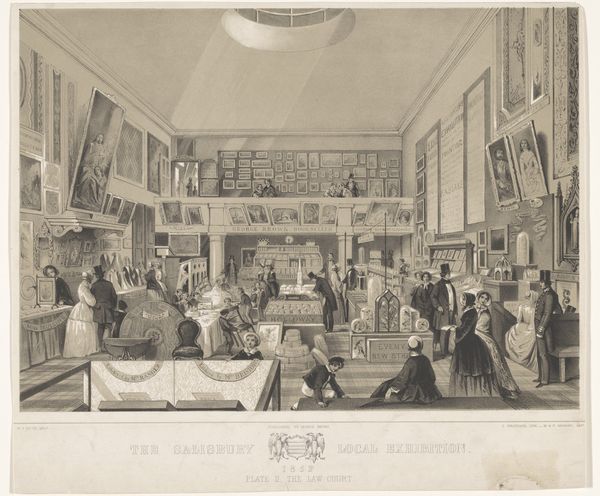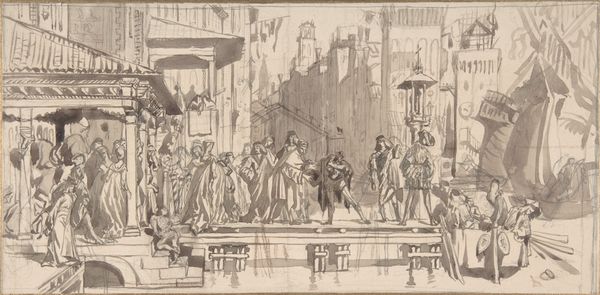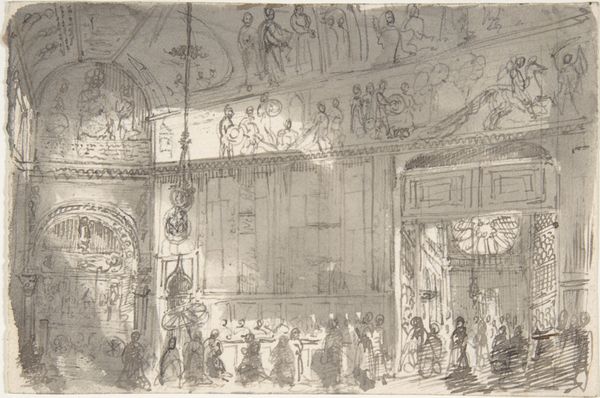
print, intaglio, engraving
#
neoclacissism
# print
#
intaglio
#
old engraving style
#
figuration
#
line
#
genre-painting
#
history-painting
#
engraving
#
realism
Dimensions: height 414 mm, width 548 mm
Copyright: Rijks Museum: Open Domain
Curator: Before us hangs "Zaal der Natuurkunde in Felix Meritis, 1789," rendered in 1801 by Reinier Vinkeles. It’s an engraving that offers us a glimpse into the scientific world of late 18th-century Amsterdam. Editor: The sheer detail of the crosshatching to give the print its depth is really extraordinary; what's even more compelling to me is that we’re peeking in at such an august assembly – very theatrical with its rising tiers and central demonstration. You feel as though you're in the audience. Curator: Absolutely. Vinkeles masterfully uses line to articulate the architecture and the figures. Look how the light falls, shaping each individual, contributing to a coherent spatial structure and dramatic dynamic. The composition guides our eye towards the speaker, framed within this architectural marvel. Editor: It really makes you wonder about the construction of that space, and the resources invested in such an enterprise for education and scientific advancement. The elaborate chandelier suggests civic pride and even wealth, a sort of performance stage for science. I want to know how they produced the ink, the quality of the paper they used, and how many impressions were made. What did they use it for? Who was it for? Curator: A fine set of questions. While, of course, considering its Neoclassical elements – the balanced composition, the rational presentation – we can consider the social climate, which suggests Enlightenment ideals: progress, reason, the public dissemination of knowledge. Vinkeles shows us not just a room, but a physical manifestation of intellectual ambition. Editor: Agreed. Thinking of it from that perspective, it's interesting to observe how such spaces foster certain behaviors and exclude others. The very materials and design contribute to shaping knowledge and its dissemination – and this print acts almost as a promotional or documentation tool. How would people know of such institutions, such learning spaces, otherwise? Curator: A prescient observation indeed. We can view the print’s meticulous composition, the clarity of line, as echoing that desire for clarity, for truth, in scientific endeavor itself. Vinkeles elegantly portrays this symbiosis. Editor: Reflecting on this intaglio print, it reminds us that even something seemingly simple carries deep layers of meaning when we explore its making, and how its social function shaped it. Curator: I concur. Analyzing its form allows us an elegant entrance into a broader historical understanding.
Comments
No comments
Be the first to comment and join the conversation on the ultimate creative platform.
